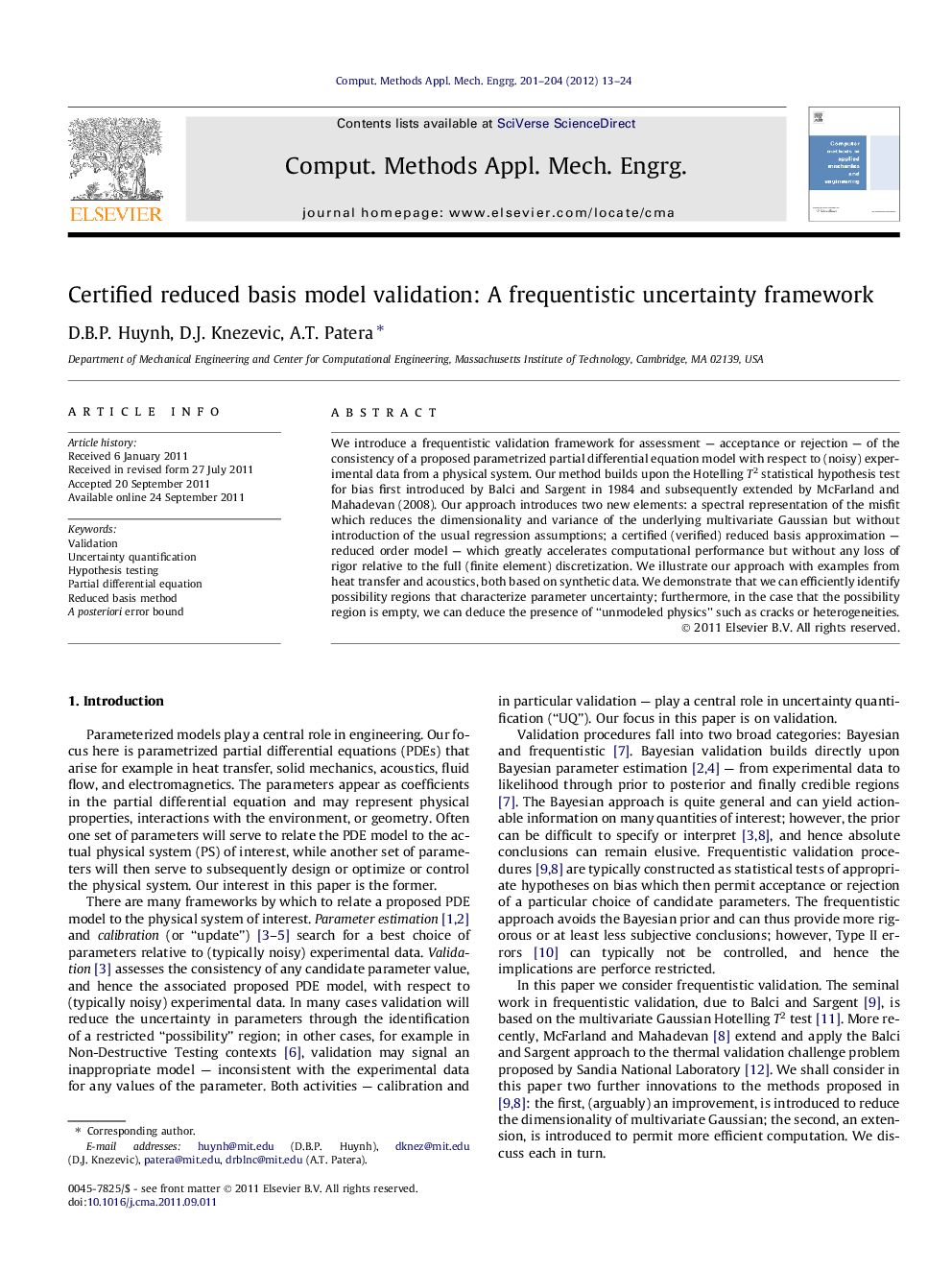| کد مقاله | کد نشریه | سال انتشار | مقاله انگلیسی | نسخه تمام متن |
|---|---|---|---|---|
| 498413 | 862992 | 2012 | 12 صفحه PDF | دانلود رایگان |

We introduce a frequentistic validation framework for assessment — acceptance or rejection — of the consistency of a proposed parametrized partial differential equation model with respect to (noisy) experimental data from a physical system. Our method builds upon the Hotelling T2 statistical hypothesis test for bias first introduced by Balci and Sargent in 1984 and subsequently extended by McFarland and Mahadevan (2008). Our approach introduces two new elements: a spectral representation of the misfit which reduces the dimensionality and variance of the underlying multivariate Gaussian but without introduction of the usual regression assumptions; a certified (verified) reduced basis approximation — reduced order model — which greatly accelerates computational performance but without any loss of rigor relative to the full (finite element) discretization. We illustrate our approach with examples from heat transfer and acoustics, both based on synthetic data. We demonstrate that we can efficiently identify possibility regions that characterize parameter uncertainty; furthermore, in the case that the possibility region is empty, we can deduce the presence of “unmodeled physics” such as cracks or heterogeneities.
Journal: Computer Methods in Applied Mechanics and Engineering - Volumes 201–204, 1 January 2012, Pages 13–24